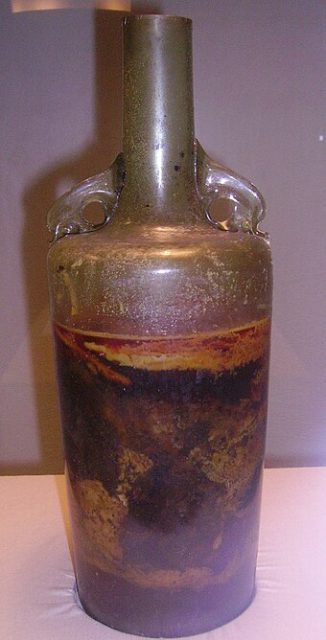1,697 year-old bottle of wine ‘safe to drink’
Some vintages are described as ‘very very old’, but a 1,697 year-old bottle of wine is making an 80-year-old Port look young.

The so-called ‘Speyer bottle, which is located in the Historical Museum of the Palatinate in Speyer, Germany, was discovered in 1867 during the excavation of the grave of a Roman nobleman and woman near to the city, and has now been described as safe to drink.
It dates back to around 325, which was the time of the first council of Nicaea, where there was an attempt to unify a consensus around Christianity, during the rein of the Roman Emperor Constantine.
Now questions have been raised about whether the bottle, which was one of 16 found during the tomb excavation and the only one still intact, can actually be drunk. Wine professor Monika Christmann, the head of the Institute for Oenology at the Hochschule Geisenheim University, said to Futurism: “Micro-biologically it is probably not spoiled, but it would not bring joy to the palate.”
Analysis of the the 1.5 litre bottle has revealed that part of the liquid in the vessel was once wine, but it would be challenging to still describe it as such. In its present state, scientists believe it has lost its ethanol content and it is now a firm texture.
The museum’s wine department curator, Ludger Tekampe, who said the contents of the bottle hadn’t changed in 25 years, was concerned that it couldn’t withstand being opened too
Partner Content
He told local news: “We are not sure whether or not it could stand the shock to the air. It is still liquid, and there are some who believe it should be subjected to new scientific analysis, but we are not sure. I have personally held the bottle twice in my hand during renovations. That was an amazing feeling.”
Olive oil as a preservative and being sealed with wax rather than cork has allowed the ‘wine’ to survive to 2023. The bottle itself has an interesting history after its discovery too: it was analyzed by the Kaiser’s chemists during World War I and has been on display for more than a century.
In addition, Tekampe was concerned that even handling the bottle was dangerous, potentially destroying its content. He is the only one allowed to handle it, and he has only done so twice, describing it as a “strange feeling”. But he added that they would like to test it to find out where the wine came from and what it was…and maybe how it tastes.
At the current time though, the bottle has not been opened and remains on display in the museum.
Related news
Castel Group leadership coup escalates
For the twelfth day of Christmas...
Zuccardi Valle de Uco: textured, unique and revolutionary wines




